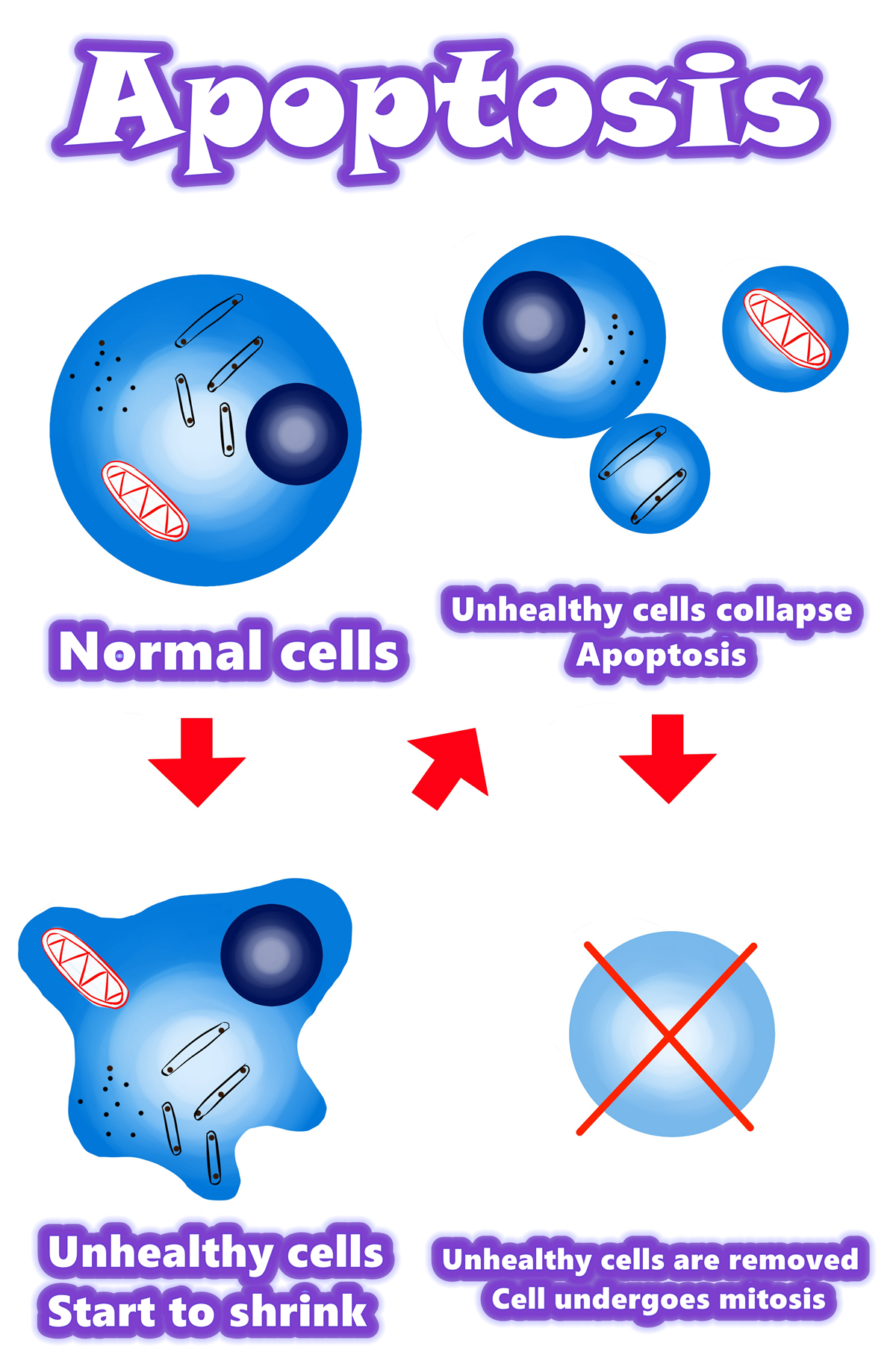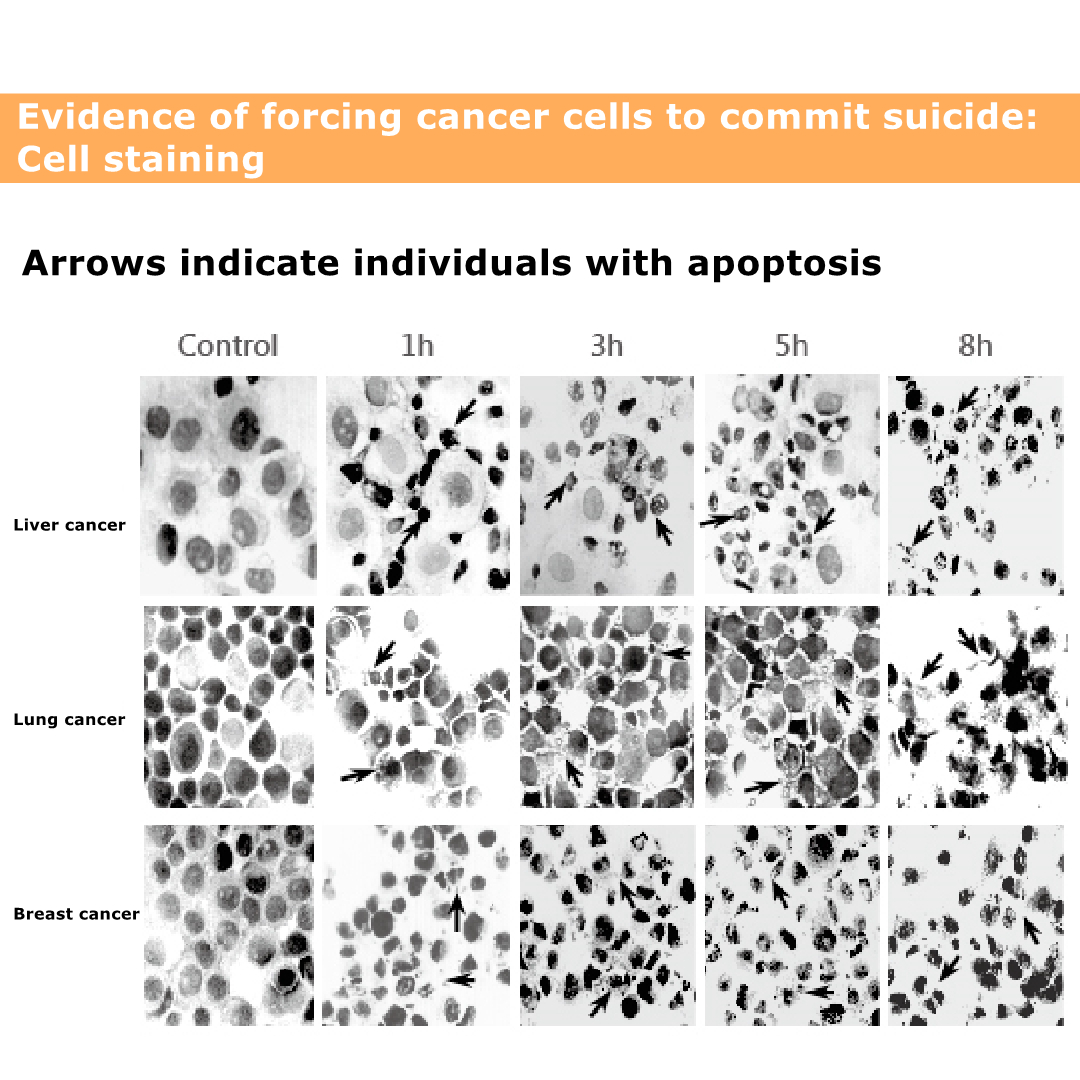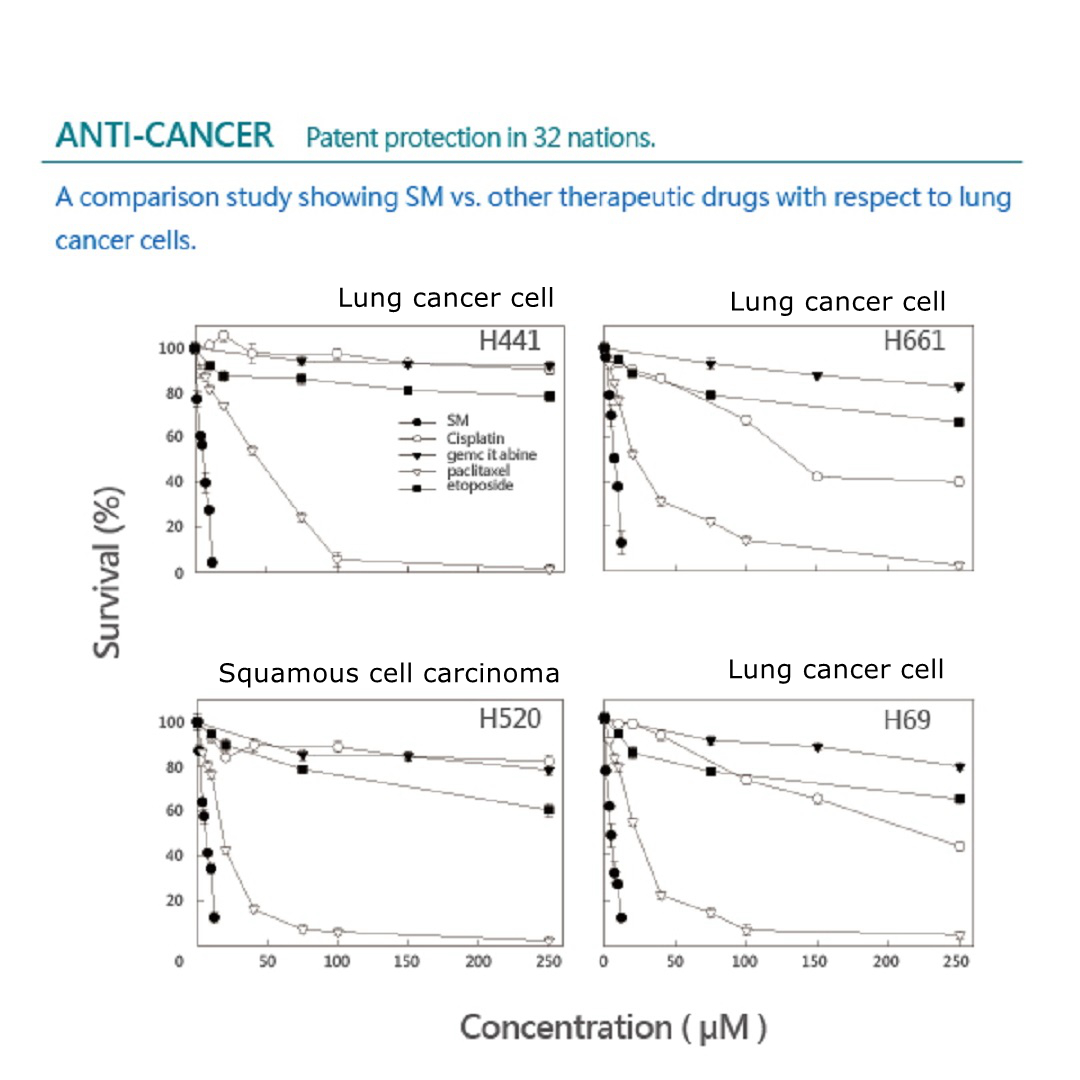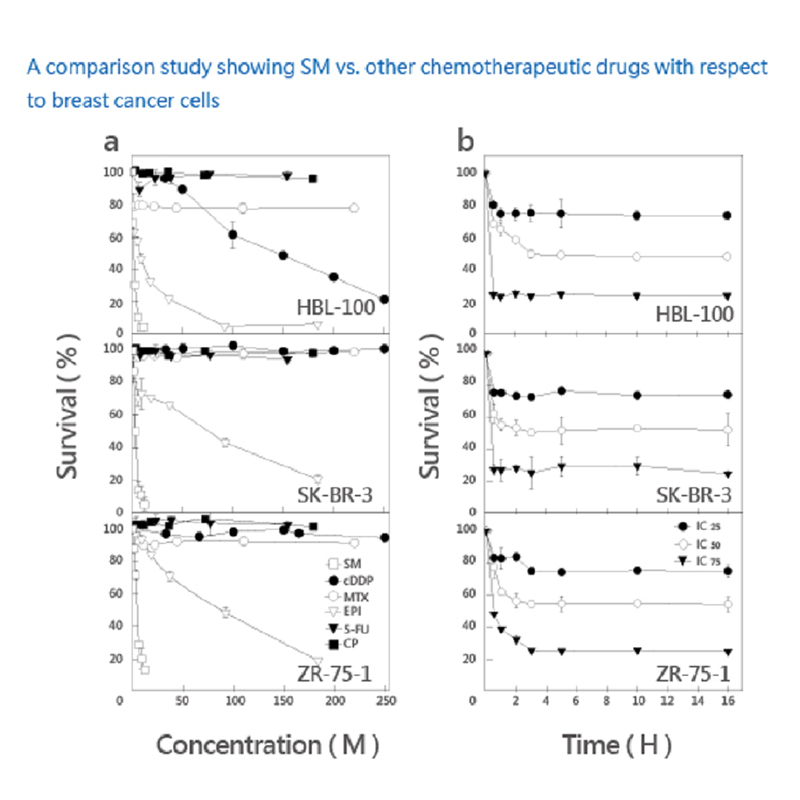
Best adjuvant (assist) for chemotherapy | 1+1>487% |
Effectively improve chemotherapy effect, treatment, immunity.
Reduce side effects and recurrence.
Overview / Relation / Abstract / Role / Principle / Action / Mechanism / Function / Work |
What can I do to reduce my risk of developing breast cancer or ovarian cancer if I have a BRCA gene mutation?
What are the screening options for HBOC?
Abstract / Summary / Overview of Apoptosis.
Why do cells undergo apoptosis?
The relationship between cancer cells and apoptosis.
Where are the weaknesses and symptoms of cancer cells?
Are cancer cells aggressive?
Extraordinary Solamargine (Role, Principle, Action, Mechanism, Function, Work)
Solamargine's major function mechanism:
Solamargine vs cancer
Best Chemotherapy Adjuvant. (1+1>478%)
Effectively improve chemotherapy effect and cure.
When cancer cells are less resistant to drugs, chemotherapy becomes more effective.
Extract : https://www.cancer.net/cancer-types/
What can I do to reduce my risk of developing breast cancer or ovarian cancer if I have a BRCA gene mutation?
Risk-reducing surgery
A prophylactic, bilateral mastectomy, which is the preventive surgical removal of both breasts, can lower the risk of breast cancer by more than 90%. Only about 3% of breast cancers associated with BRCA mutations are diagnosed before age 30, so most women with a BRCA mutation could consider surgery after 30. However, bilateral mastectomy is an invasive and irreversible procedure.
A prophylactic salpingo-oophorectomy, which is the preventive surgical removal of the ovaries and fallopian tubes, can lower the risk of ovarian cancer by approximately 90%. It may also help lower the risk of breast cancer by 50% for women who have not been through menopause. A special procedure to look for microscopic cancer in the ovaries and fallopian tubes is recommended after this surgery. The Ovarian Cancer Research Alliance (OCRA) recommends that people undergoing pelvic surgery for noncancerous conditions, such as a hysterectomy or tubal ligation, consider fallopian tube removal to reduce their risk of ovarian cancer. This is called a salpingectomy.
Deciding whether to have preventive surgery to lower your risk of developing breast or ovarian cancer is a very personal decision. Your health care team and genetic counselor can help you understand the risks and benefits, based on your health, type of BRCA mutation, and family history of cancer.
Chemoprevention
Cancer chemoprevention is the use of drugs to stop or keep cancer from developing. Tamoxifen (available as a generic drug) taken for 5 years by women with a high risk of breast cancer lowers this risk by 50%. Some research suggests that tamoxifen can help lower breast cancer risk for women with BRCA1 and BRCA2 mutations. However, because women with BRCA1 mutations are more likely to develop hormone receptor-negative cancers, it may not be as effective for these women. Risk-reducing tamoxifen is a reasonable option for women with BRCA1 or BRCA2 mutations to consider in addition to screening (see below). Raloxifene (Evista) and aromatase inhibitors (AIs) can also help lower breast cancer risk for women with higher risk of the disease. However, there is not much research on how well they work for women with BRCA1 or BRCA2 mutations.
Taking oral contraceptives, or birth control pills, for 5 years may lower the risk of ovarian cancer for women with BRCA1 or BRCA2 mutations by up to 50%. However, this must be balanced by a potential slight increase in the risk of breast cancer.
What are the screening options for HBOC?
Screening is the use of different tests to find specific types of cancer before signs and symptoms appear. It is important to talk with your health care team about the following screening options, as each person is different:
Screening for women with a BRCA1 or BRCA2 gene mutation
Monthly breast self-examinations, beginning at age 18
Clinical breast examinations performed twice a year by a health care team or nurse, beginning at age 25
Yearly magnetic resonance imaging (MRI) scans of both breasts, between ages 25 and 29.
Yearly mammogram and breast MRI, between ages 30 and 75.
Pelvic (gynecologic) examination, trans-vaginal ultrasound, and CA-125 blood test every 6 months, beginning at age 30 to 35. It should be noted, however, that screening is not yet able to find most early ovarian cancers.
Consideration of prophylactic salpingo-oophorectomy, between ages 35 and 40, and once a woman is done giving birth to children
Screening for men with a BRCA1 or BRCA2 gene mutation
Monthly breast self-examinations, beginning at age 35
Yearly clinical breast examinations, beginning at age 35
Consider a baseline mammogram at age 35 for men with a BRCA2 gene mutation, if there is gynecomastia, meaning swelling of the breast tissue in boys or men, or if enough breast tissue is present for mammogram
Yearly prostate cancer screening with digital rectal exam and PSA blood test, beginning at age 45. Current U.S. Preventive Services Task Force (USPSTF) guidelines for men that recommend reducing the use of PSA screening do not apply to men with a BRCA1 or BRCA2 gene mutation.
Screening options may change over time as new methods are developed and more is learned about HBOC. Talk with your health care team about appropriate screening tests for you.
Abstract / Summary / Overview of Apoptosis.

Overview of apoptosis
•Programmed cell death
•Apoptosis is a form of programmed cell death, or “cellular suicide.”
•Apoptosis is different from necrosis, in which cells die due to injury.
•Apoptosis removes cells during development, eliminates potentially cancerous and virus-infected cells, and maintains balance in the body.
Why do cells undergo apoptosis?
- Basically, apoptosis is a general and convenient way to remove cells that should no longer be part of the organism.
- Some cells are abnormal and could hurt the rest of the organism if they survive, such as cells with viral infections or DNA damage.
- Apoptosis is part of development
- In many organisms, programmed cell death is a normal part of development.
The relationship between cancer cells and apoptosis
Apoptosis can eliminate infected or cancerous cells.
When a cell’s DNA is damaged, it will typically detect the damage and try to repair it.
If the damage is beyond repair, the cell will normally send itself into apoptosis, ensuring that it will not pass on its damaged DNA.
When cells have DNA damage but fail to undergo apoptosis, they may be on the road to cancer.
However, “successful” cancer cells successfully evade the process of apoptosis.
This allows them to divide out of control and accumulate mutations (changes in their DNA).
Apoptosis is key to immune function
Apoptosis also plays an essential role in the development and maintenance of a healthy immune system.
Where are the weaknesses and symptoms of cancer cells?
The symptoms of cancer cells are in the nucleus.
The nucleus controls the outer cytoplasm, cell composition, cell viability, etc.
DNA mutations also mutate in the nucleus.
Therefore, to treat cancer cells, we must first enter the nucleus.
Let the “regulatory cell gene” mechanism enter the nucleus to regulate
Are cancer cells aggressive?
After the action of Solamargine, the aggressiveness of cancer cells is alleviated.
So after using Solamargine, many patients feel that I am half better.
Although the tumor does not disappear quickly, patients feel that the degree of aggressiveness is reduced.
Extraordinary Solamargine (Role, Principle, Action, Mechanism, Function, Work).

Solamargine's major function mechanism:
When Solamargine enter,
Solamargine activates receptors that are turned off by cancer cells, allowing cancer cells to modulate again.
Solamargine modulates the anti-modulates genes of cancer cells, making cancer cells less resistant.
Reduced drug resistance
When cancer cells are less resistant to drugs, chemotherapy becomes more effective.
Solamargine modulates the mutated genes in cancer cells and then initiates cancer cell apoptosis to achieve anti-cancer effects.
Solamargine combined with which chemotherapy drugs are more effective in treating cancer cells?

Solamargine vs cancer

Solamargine vs cancer
The picture shows the death of cancer cells.
The black and black parts are cancer cell nuclei.
Even if the nucleus ruptures, the cancer cells will die.
The figure shows that cancer cells can cause death.

The figure shows that cancer cells can cause death.
The figure shows that the death of lung cancer cells is relatively slow, and it will not be obvious until eight hours later.
The figure shows that the death of liver cancer cells is very obvious, even more obvious in eight hours.
The graph shows that breast cancer cells die faster. It was obvious from the beginning that breast cancer is easy to treat, and patients with breast cancer need not worry.
Best Chemotherapy Adjuvant. (1+1>487%)
Effectively improve chemotherapy effect and treatment.
ANTI-CANCER
Patent protection in 32 nations.
A comparison study showing Solamargine vs. other therapeutic drugs with respect to lung cancer cells.
 A comparison study showing Solamargine vs. other chemotherapeutic drugs with respect to breast cancer cells.
A comparison study showing Solamargine vs. other chemotherapeutic drugs with respect to breast cancer cells.

SR-T100 combination therapy with effective result against breast cancer cells.

Combination Therapy | Research results for lung cancer cells.
A. Chemotherapy (100μM), 16% of cancer cell apoptosis.
B. Alone SM (4.8μM), 28% of cancer cell apoptosis.
C. SM (4.80μM) + Chemotherapy (40μM), 66% of cancer cells apoptosis.
D. SM (4.80μM) + Chemotherapy (100μM), 78% of cancer cell apoptosis.
SM has a clearing effect better than Chemotherapy.
The combined treatment of Solamargine and Chemotherapy significantly increased the apoptosis of lung cancer cells.
SM (4.8μM) + Chemotherapy (40μM), increased from 16% to 66% (up to 4.125 times).
SM (4.8μM) + Chemotherapy (100μM), increased from 16% to 78% (up to 4.875 times).
Reorganized from: BBRC. Action of Solamargine on TNFs and drug-resistant human lung cancer cells 2004.
The best solution for cancer cells.
